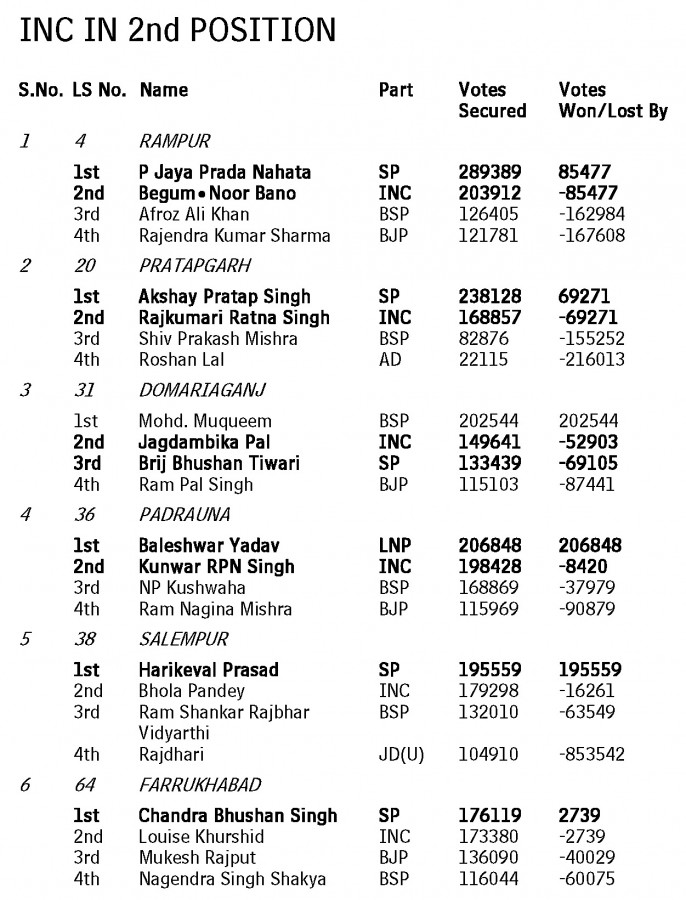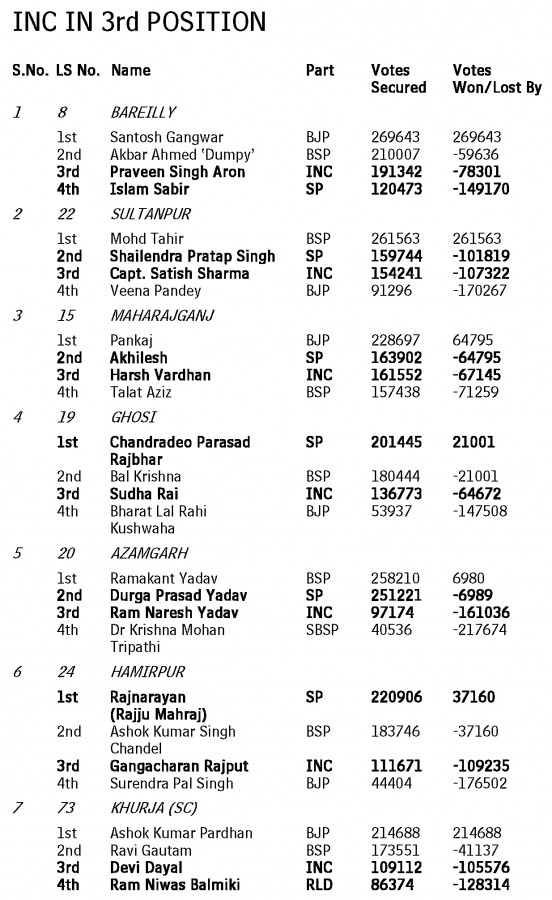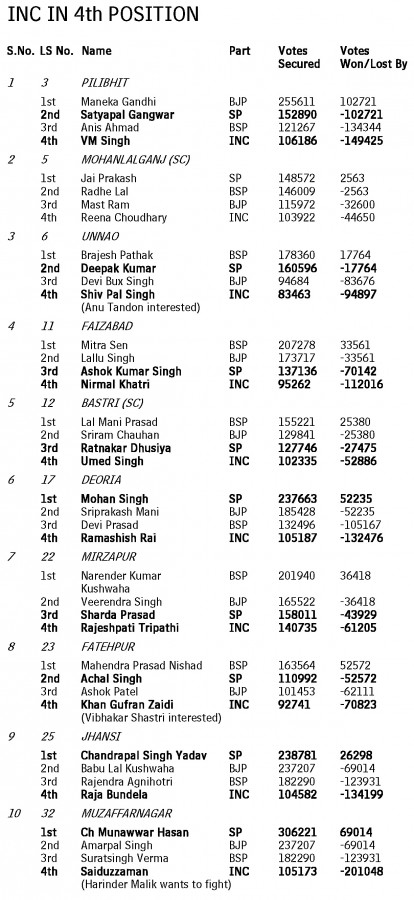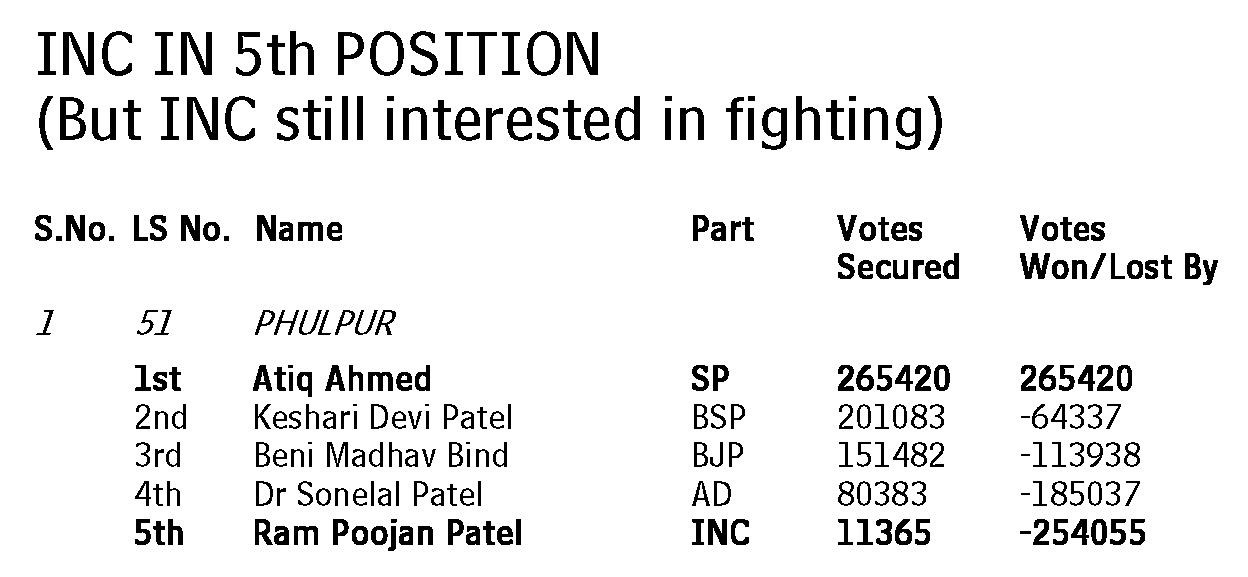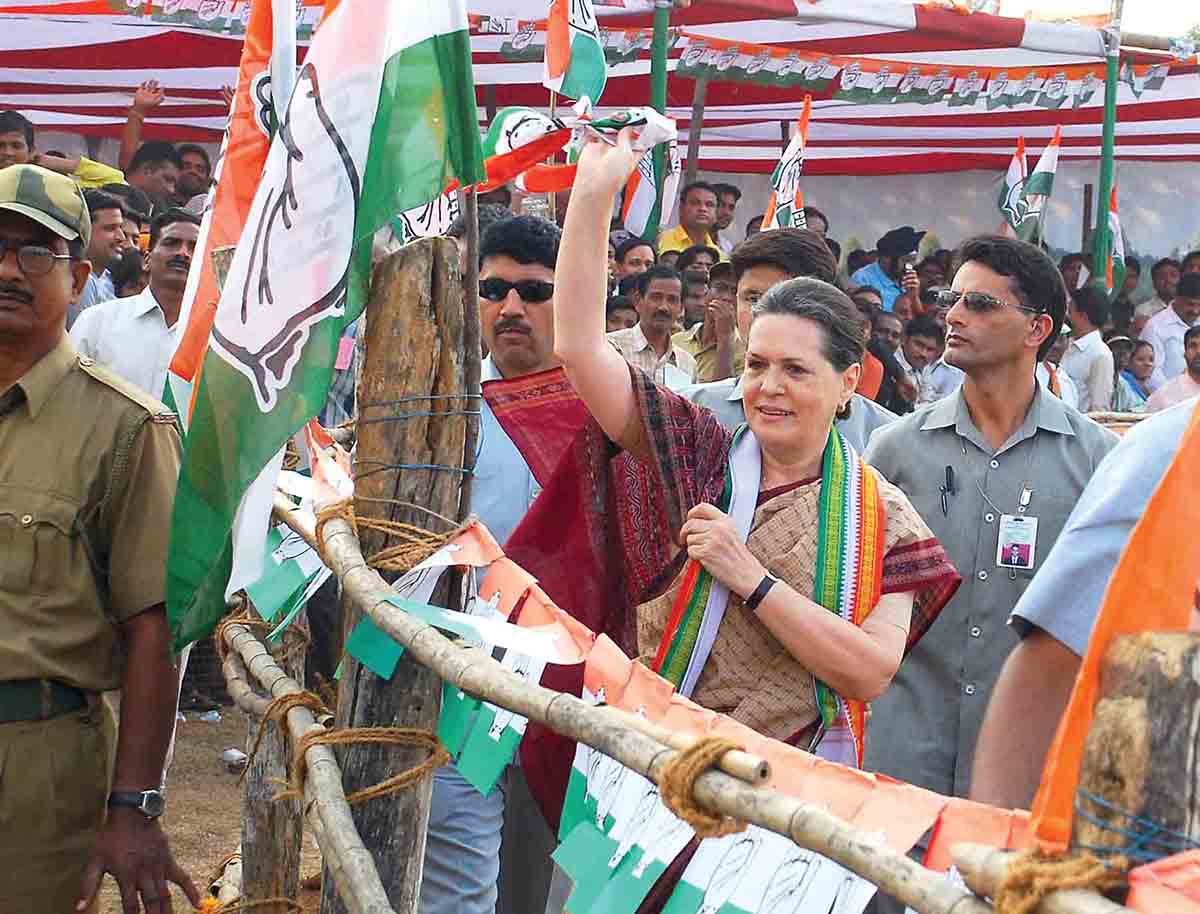UP has traditionally held the key to power in Delhi. But Congress has increasingly lost control of this crucial state over the years. In an attempt to make a mark in the next elections, the Congress is holding its cards close to the chest on who it will ally with - the Samajwadi Party which bailed out the government in the July trust vote or the BSP which is in power in UP. It’s a game of poker.
The dialogue between the Samajwadi Party (SP) and the Congress to forge an electoral alliance in Uttar Pradesh is a classic case of how not to conduct political negotiations.
The two parties have been at each other’s throat ever since they decided to evolve a seat sharing arrangement in Uttar Pradesh (UP) in the coming Lok Sabha elections.
Congress leader Satyavrat Chaturvedi, once part of the inner council of Sonia Gandhi, called SP general Secretary Amar Singh “mad” and under pressure from the SP, he was axed from the media committee. On the other side, Amar Singh has let loose a volley of words, accusing the Congress of using the CBI politically to frame charges against Mulayam Singh in the disproportionate assets case against the SP chief. He also alleged that Sonia Gandhi had used UP Governor TV Rajeswar as an emissary to talk to the SP to seek their support in the July 2008 trust vote. Such charges would have made it impossible for any two organisations to join hands, given the chequered relationship between the two parties over the last 20 years. This goes back to 1991, when Rajiv Gandhi had supported Mulayam in Lucknow, umindful of his party leaders’ advice and Mulayam, after a late night talk with Rajiv in Delhi, had driven straight to the Governor’s residence in Lucknow at the crack of dawn, recommending the dissolution of the House.
In 1999, Mulayam prevented Sonia Gandhi from becoming Prime Minister, after Jayalalitha had pulled down the Vajpayee ministry. In 2004, Amar Singh’s uninvited entry into10, Janpath, for a dinner after the Congress’ victory had led to bad blood between the parties for years. But given that there are no permanent friends and no permanent enemies in Indian politics, the issue of a Congress-SP tie-up still remains an open question. The pro-alliance Congressmen argue that the purpose of the tie-up is to be “less dependent on the SP after the elections.” For, the more seats the Congress gets – which it hopes to do with SP than without it – the less dependent it is likely to be on other groups, like the SP, afterwards.
Rahul Gandhi’s reaction at a meeting a few days ago is a straw seized by all those hopeful of an alliance. When someone remarked at the meeting that the UP Congressmen were keen to contest elections, Rahul is believed to have quipped, “Why did they not do so in the local body elections when there was no alliance with the SP?”
There are two reasons why the two parties have not been able to strike a deal despite the obvious advantages accruing to both. The first is the souring of relations between Amar Singh and Digvijay Singh, the two Thakurs who are driving the process of negotiations. Sonia Gandhi has left UP to Rahul and Digvijay Singh, who is in-charge of the state.
The SP leaders see Digvijay Singh’s hand behind the Congress poaching on their four MLAs in Madhya Pradesh. The Congress counter-alleges that the SP has taken away its nagarpalika leaders.
Amar Singh also suspects Digvijay Singh, who is friendly with Mukesh Ambani, of targeting friend Anil Ambani.
Though Amar Singh is far junior in politics to Digvijay Singh, who was Chief Minister for two terms, the SP leader would now like to be recognised as an eminent Thakur leader, who should be given his due, and not viewed the way he used to be when he was an aide of Madhav Rao Scindia 20 years ago. He has also felt reportedly rattled with the way Digvijay Singh has been attending Kshatriya mahasabhas in UP and elsewhere.
Digvijay Singh has also been critical of the SP decision to go with Kalyan Singh, who was Chief Minister of UP when the Babri masjid was demolished. The Kalyan Singh factor has come in handy for Congressmen opposed to the alliance because of the unhappiness it has generated amongst Muslims, including leaders within the SP, like Azam Khan and Salim Sherwani. Mulayam Singh may have felt he would be able to ride the storm, but miscalculated. This does not mean that the Muslims will fall into the Congress lap, were the party to go it alone. At the end of the day, like always, Muslims are expected to vote tactically, and constituency wise, for whoever is in a position to defeat the BJP.
Whatever the SP may hold Digvijay Singh responsible for, it cannot blame him for the Supreme Court’s stance in Mulayam’s DA case, but this too is a cause for deep unhappiness between the two sides. As it is, the Congress had mud on its face, with the CBI going soft in the case for which the court pulled up the apex investigating agency. The Congress may not have illusions about its powers to influence the court, but the SP is convinced that the Congress can work miracles to get its leader acquitted but is not putting its best foot forward.
The second reason, and that is the kernel of the conflict, is the number of seats that the SP is prepared to leave for the Congress. The Congress, which won nine Lok Sabha seats in 2004, has been demanding 25. The SP had so far been willing to conceded only 15. These include the nine that the party won in 2004 plus three where it got more votes than the SP. They are Domariyagunj, Bareilly and Khurja. There are another three that SP agreed to give to the Congress. These were Sultanpur, where the Congress was behind the SP by only 5000 votes, but the SP has put a proviso here — that the Congress will not field Sanjay Singh from here but put up Satish Sharma. Nominating Sanjay Singh, a Rajput, could lead to a revolt in its ranks because its candidate last time was a Rajput. Then there is Padrauna, being sought by RPN Singh, who lost by only 8000 votes last time. And one seat in Bundelkhand.
The Congress has also been seeking another 10 seats, which it thinks it could win, like Farrukhabad being sought by Salman Khurshid (his wife Louise had lost by only 2000 votes to the SP), Moradabad from where Noor Bano wants to contest this time instead of Rampur which has been given to SP’s Jaya Prada, Pratapgarh being demanded by Ratna Kumari and this is a seat both Digvijay Singh and Pramod Tiwari are interested in, Salempur, Faizabad, Meerut and even Muzzafarnagar, where the SP polled three lakh votes last time and the Congress got only just over a lakh.
Despite the bad blood between the two parties, it is possible that the SP agrees to leave 18-20 seats for the Congress. If that happens, the Congress can be expected to sew up the deal. At the end of the day, it will be Sonia Gandhi who will have to take a decision and she is expected to be guided by hard political calculations, and whether the deal has the potential to improve the Congress’ post-poll tally and thereby improve its chances of emerging as the single largest party.
After all, UP has driven Indian politics — whether it was under Jawaharlal Nehru, Indira Gandhi, Lal Bahadur Shastri, Rajiv Gandhi, VP Singh, Chandrashekhar or Atal Bihari Vajpayee. And the fortunes of the Nehru-Gandhi family are closely linked to Uttar Pradesh.

